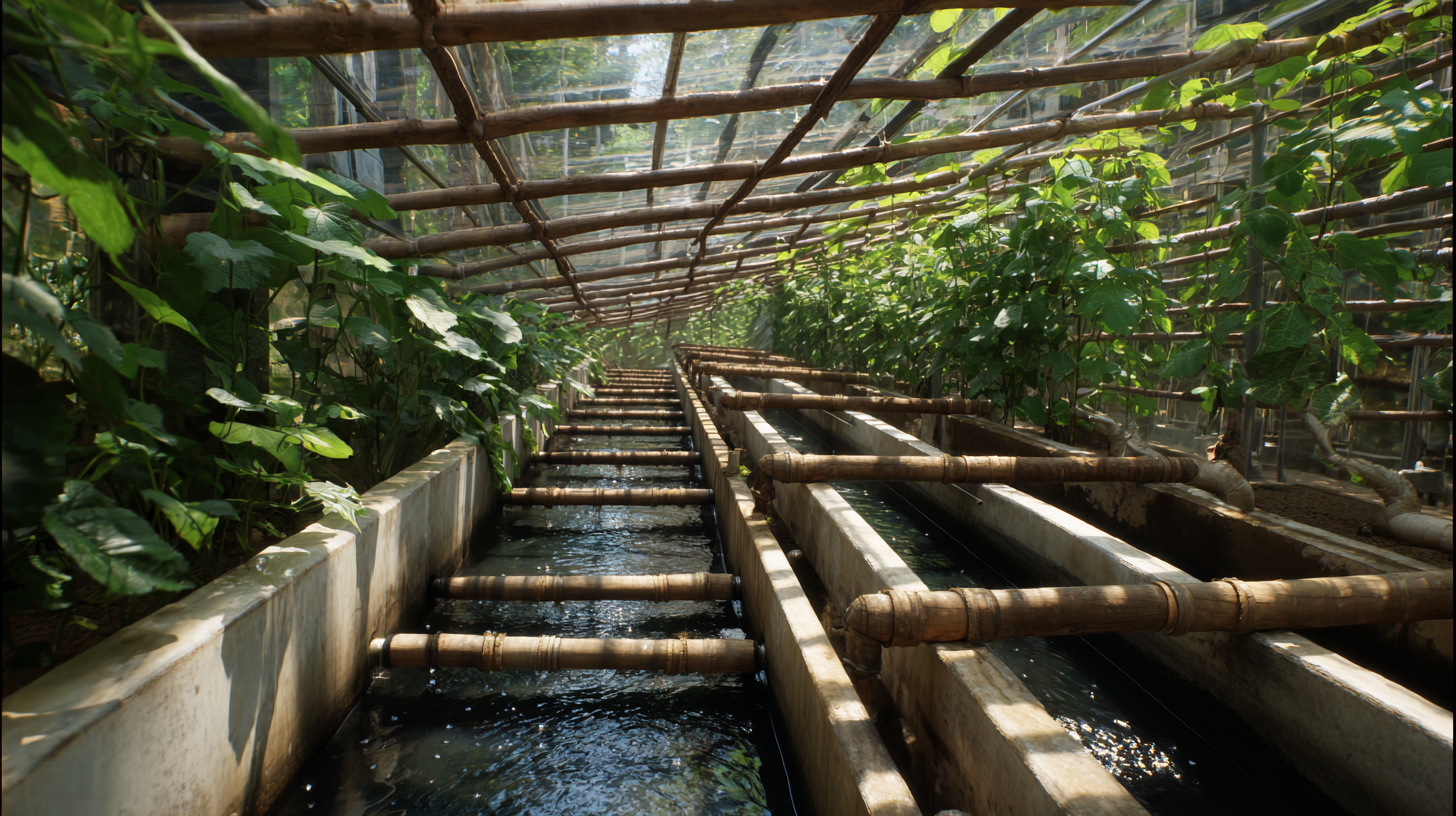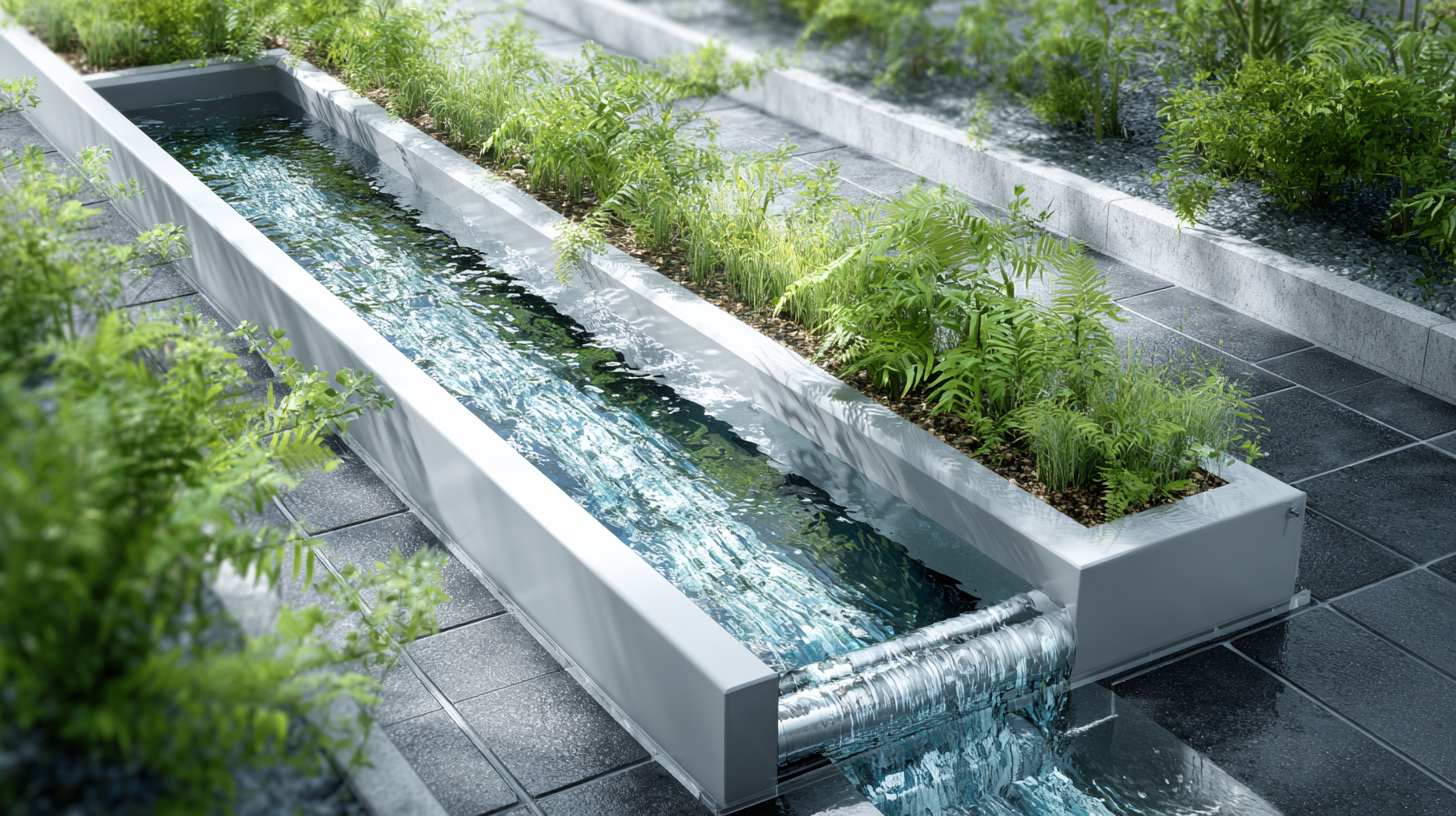The demand for effective water drainage systems has become more critical than ever as urbanization accelerates and climate change intensifies, leading to increased rainfall and flooding events. According to a report by the American Society of Civil Engineers, over 15% of the United States' infrastructure is in disrepair, significantly affecting water management systems. This not only threatens property and public safety but also exacerbates environmental issues such as soil erosion and water contamination. As traditional drainage solutions reach their limits, innovative alternatives are emerging as sustainable methods to enhance drainage efficiency while minimizing ecological impacts. This blog delves into these innovative approaches to water drainage systems, examining their benefits, challenges, and potential to reshape how societies manage stormwater for a more sustainable future.

As we navigate the challenges posed by climate change and urbanization, innovative technologies are emerging to revolutionize water drainage systems by 2025. These advancements focus on more sustainable practices that not only enhance the efficiency of water management but also contribute to the ecological integrity of urban environments. One such innovation is the integration of smart sensors within drainage systems. These sensors provide real-time data on water flow, allowing for dynamic responses to flooding and excess runoff.

Another promising technology is the use of permeable materials in urban landscaping and infrastructure. By replacing traditional asphalt and concrete with permeable pavements, cities can boost water infiltration and reduce surface runoff, minimizing flooding risks. Additionally, these materials can be designed to filter pollutants before they enter the water table, promoting cleaner water ecosystems. As we embrace these innovative alternatives, the future of water drainage systems looks to be not only more efficient but also deeply attuned to the principles of sustainability and environmental stewardship.
Smart sensors are transforming the landscape of water drainage systems by significantly enhancing their efficiency and sustainability. According to a recent report by the Global Sensors Industry, the integration of smart sensor technology in water management can reduce operational costs by up to 30%. These advanced sensors provide real-time data on water levels, flow rates, and potential blockages, which allows for proactive maintenance and timely interventions. The effectiveness of smart sensors can lead to a more resilient drainage infrastructure, vital for urbanized areas increasingly prone to flooding.
Additionally, studies by the American Society of Civil Engineers indicate that cities utilizing smart drainage solutions can lower their flood risk by 25% compared to traditional systems. These sensors not only monitor conditions but also communicate with other smart systems to optimize drainage responses dynamically. For instance, during heavy rainfall, smart sensors can adjust the drainage output, thus mitigating the risk of overflow and contributing to better stormwater management. As cities strive towards sustainability, adopting smart sensor technologies in water drainage systems represents a crucial step in fostering environmentally friendly urban landscapes.
The increasing prevalence of impervious surfaces in urban areas has significantly exacerbated stormwater runoff and flooding issues, leading to urgent calls for sustainable solutions. One innovative approach gaining traction is permeable paving, which allows water to infiltrate the surface, thus reducing urban heat island (UHI) effects and improving local water management.
Recent studies indicate that the global market for pervious concrete pavers was valued at USD 9.13 billion in 2023, with a projected growth rate of 5.8% per annum through 2030, reflecting a growing interest in sustainable urban development practices.

Moreover, the incorporation of porous asphalt pavement design utilizing recycled coarse aggregates has shown promise in mitigating urban waterlogging and enhancing water drainage efficiency. Experimental studies highlight that porous asphalt not only helps in managing stormwater but also plays a crucial role in reducing the UHI phenomena by promoting evapotranspiration and lowering surface temperatures. As urban centers continue to grapple with climate change challenges, these innovative permeable paving solutions represent a critical step towards building more resilient and environmentally friendly cities.
Green infrastructure has emerged as a pivotal strategy in transforming local water management, particularly in urban areas facing challenges related to stormwater runoff and flooding. By integrating natural processes with engineered systems, municipalities can mitigate the adverse effects of heavy rainfall while enhancing the local ecosystem. Techniques such as rain gardens, green roofs, and permeable pavements not only manage excess water but also improve water quality by filtering pollutants and reducing surface runoff.
Moreover, the implementation of green infrastructure promotes biodiversity and provides recreational spaces within urban environments. These solutions harness the power of nature, allowing water to infiltrate the ground and replenish aquifers, drastically reducing the burden on traditional drainage systems. As cities embrace these innovative alternatives, they create resilient landscapes that adapt to climate changes, ensuring sustainable water management for future generations. The shift towards greener solutions reflects a growing awareness of the interconnectedness of urban development and natural ecosystems, fostering a more sustainable approach to water management strategies.
| Water Management Strategy | Green Infrastructure Type | Benefits | Challenges | Effectiveness (%) |
|---|---|---|---|---|
| Rainwater Harvesting | Cisterns and Tanks | Reduces runoff, conserves water | High initial cost | 80 |
| Bioretention Systems | Rain Gardens | Improves water quality, enhances biodiversity | Space requirements | 75 |
| Permeable Pavements | Porous Asphalt and Concrete | Reduces surface runoff, recharges groundwater | Winter maintenance challenges | 70 |
| Vegetated Roofs | Green Roofs | Insulates buildings, reduces urban heat | Structural load issues | 85 |
| Wetlands Restoration | Natural or Constructed Wetlands | Habitat creation, flood protection | Long restoration time | 90 |
In recent years, many municipalities have begun to embrace innovative drainage solutions to address the challenges posed by urban flooding and water management. For instance, the successful implementation of alternative drainage systems, such as green roofs and permeable pavements, has demonstrated significant reductions in runoff. A report from the Environmental Protection Agency indicates that green infrastructure can reduce stormwater runoff by 30-50% in urban areas, preserving local water quality and promoting sustainability.
Melbourne Water's recent initiative to leverage advanced management solutions exemplifies how technology is aiding in the transformation of traditional drainage systems. By optimizing rainwater management processes, such strategies not only enhance stormwater drainage but also contribute to overall urban resilience. Studies have shown that incorporating smart system technologies can reduce operational costs by up to 20%, enabling cities to allocate resources more effectively while enhancing environmental performance.
Moreover, case studies highlight the successful adoption of alternative drainage systems worldwide. Initiatives in places like Berlin and Singapore have showcased the efficacy of using bioswales and rain gardens, which can effectively mitigate flooding and support biodiversity. As cities continue to grapple with climate change and increased rainfall, these innovative drainage solutions present essential pathways for achieving sustainable water management and urban planning.

